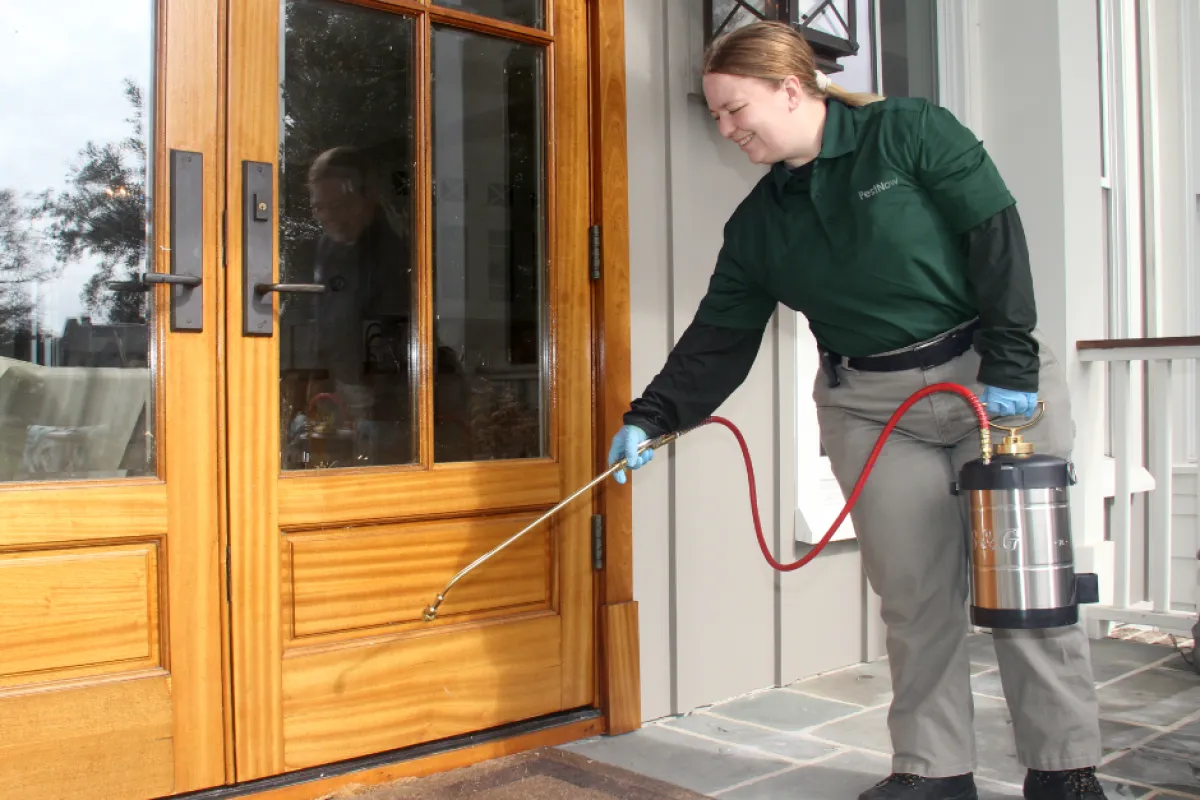A1 Charlotte Pest Control Companies - Your Local Pest Experts
Wiki Article
Bed Insect Therapy Break Down: Contrasting Chemical Vs. Non-Chemical Solutions
In the world of bug control, especially when dealing with the persistent problem of bed bugs, the choice in between chemical and non-chemical therapy remedies can be a pivotal one. Both techniques use unique benefits and downsides, affecting factors such as effectiveness, safety factors to consider, and general cost. By examining the nuanced details of each technique, a more clear understanding of which course to go after in addressing a bed bug problem can be obtained.Effectiveness of Chemical Therapies
Chemical therapies for bed insect infestations have actually been widely recognized for their powerful and fast efficacy in removing these bugs. When taking into consideration the performance of chemical therapies, it is critical to recognize that they can provide a fast and comprehensive service to a bed insect issue.Furthermore, chemical treatments have the benefit of offering residual results, meaning that they can remain to eliminate bed bugs even after the preliminary application. This recurring action is especially beneficial in combating any kind of possible re-infestations. Furthermore, the rapid activity of chemical therapies can bring relief to people dealing with severe bed insect infestations, allowing them to gain back control of their living areas quickly.
Safety And Security Worry About Chemical Solutions
When using chemical options for bed insect therapy is ensuring the safety of passengers and the setting,One crucial aspect that calls for careful consideration. While chemical therapies can be effective in eradicating bed bugs, they might posture risks otherwise dealt with effectively. Among the main safety interest in chemical solutions is the prospective injury they can create to human health. Direct exposure to certain chemicals used in bed pest therapies can cause breathing issues, skin irritation, or other adverse responses, especially in individuals with pre-existing problems or level of sensitivities. In addition, inappropriate application or dose of chemical pesticides can lead to hazardous residues remaining in the treated area, presenting lasting health threats to owners.Moreover, the ecological influence of chemical remedies is another significant consideration. Some chemicals used in bed pest therapies may be unsafe to helpful bugs, wild animals, and ecosystems if they seep right into the soil or water systems. It is essential to make use of chemical treatments carefully, following safety standards, and taking into consideration much less poisonous alternatives to alleviate these dangers and ensure the secure and effective monitoring of bed insect invasions.
Advantages of Non-Chemical Approaches
Considering the possible safety and security problems and environmental influence associated with chemical options for bed insect therapy, discovering non-chemical methods provides an appealing alternative with numerous distinctive benefits. Non-chemical techniques offer a safer choice for houses, specifically those with pets, youngsters, or people conscious harsh chemicals. These techniques remove the risks of direct exposure to toxic compounds, minimizing the possibility for damaging health and wellness results. Additionally, non-chemical treatments are eco-friendly, as they do not add to air or water contamination, making them a lasting option for insect control.Furthermore, non-chemical remedies can be effective in targeting bed bugs, consisting of hard-to-reach locations where chemical treatments may not permeate. Methods such as heat therapy, vacuuming, vapor cleaning, and bed mattress encasements supply extensive elimination without using unsafe chemicals. In addition, non-chemical why not try these out techniques can be less turbulent, calling for marginal preparation and permitting quicker reentry right into treated areas. Generally, going with non-chemical bed insect therapy approaches not only prioritizes safety and environmental security yet also makes sure effective and thorough pest control.
Limitations of Non-Chemical Treatments

Furthermore, non-chemical treatments often call for numerous applications to achieve successful elimination. This can be lengthy and may not constantly assure complete removal of all bed pests and their eggs, specifically in hidden or hard-to-reach areas.
Moreover, the success of non-chemical treatments heavily counts on appropriate implementation and thoroughness, which can be challenging for individuals without professional expertise. Inadequate application of non-chemical approaches may lead to incomplete obliteration, leading to consistent infestations and the requirement for extra treatments.
Consequently, while non-chemical therapies have their advantages, it is vital to recognize these limitations and consider them when identifying the most effective method for taking care of bed pest problems.
Price Contrast: Chemical Vs. Non-Chemical Options
Offered the restrictions linked with non-chemical treatments, an important aspect to review in the context of bed insect monitoring is the price contrast in between chemical and non-chemical options. In contrast, non-chemical therapies like warmth therapy or steam can be extra pricey, with costs ranging from $1,000 to $6,000 for a whole home. While the initial cost of chemical therapies might appear reduced, numerous therapies may be required to totally eliminate the problem, potentially enhancing the total expense.Final Thought

Taking into consideration the prospective security problems and these details environmental influence associated navigate here with chemical options for bed pest treatment, exploring non-chemical approaches presents an encouraging alternative with a number of unique advantages.Offered the constraints linked with non-chemical treatments, a vital facet to evaluate in the context of bed pest monitoring is the price contrast in between chemical and non-chemical alternatives. In comparison, non-chemical therapies like warmth therapy or heavy steam can be a lot more expensive, with costs varying from $1,000 to $6,000 for a whole home. While the preliminary cost of chemical therapies might seem lower, several therapies may be required to completely eradicate the invasion, potentially boosting the total price.In verdict, when comparing chemical and non-chemical bed insect therapy alternatives, it is vital to take into consideration performance, security, benefits, constraints, and expense.
Report this wiki page